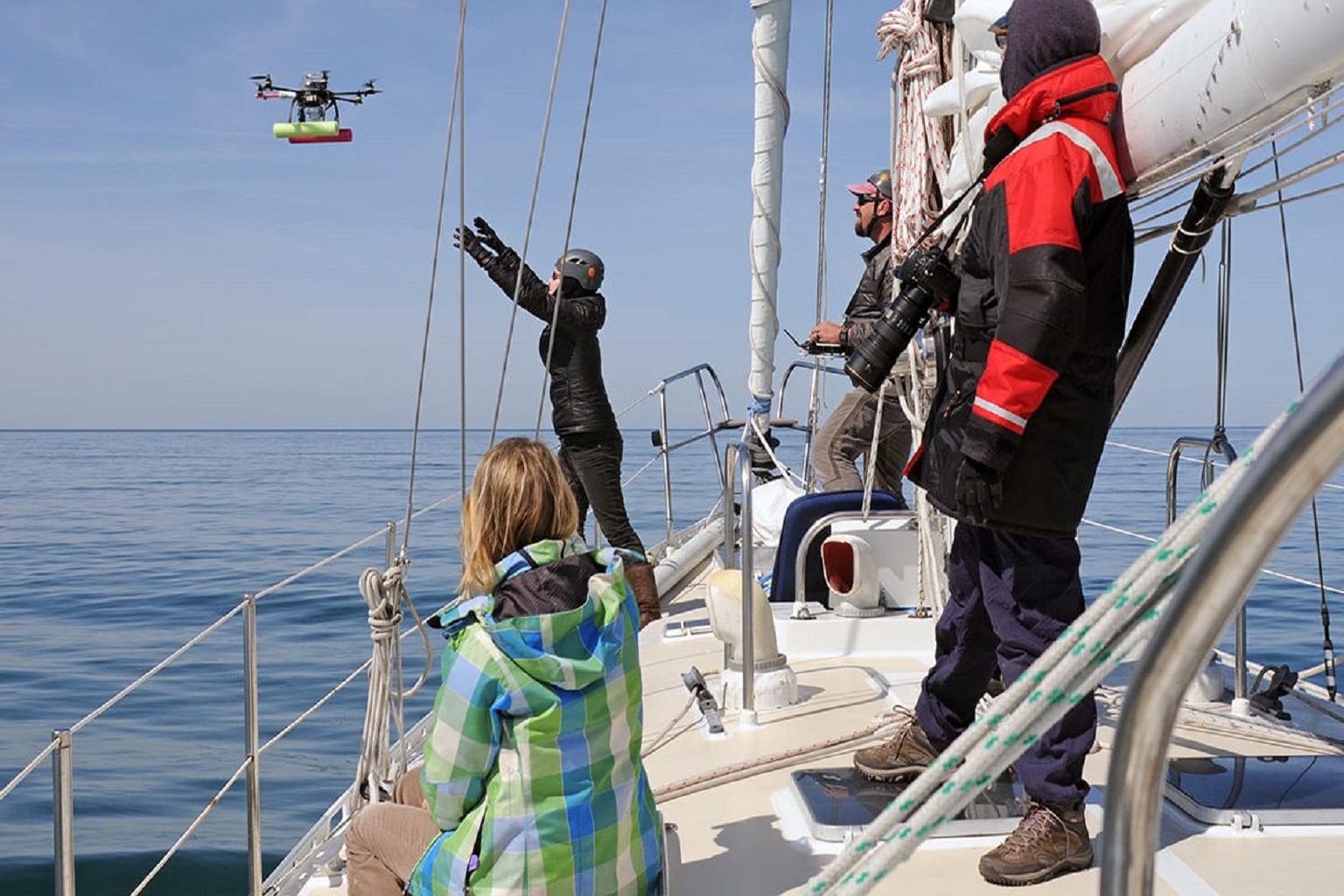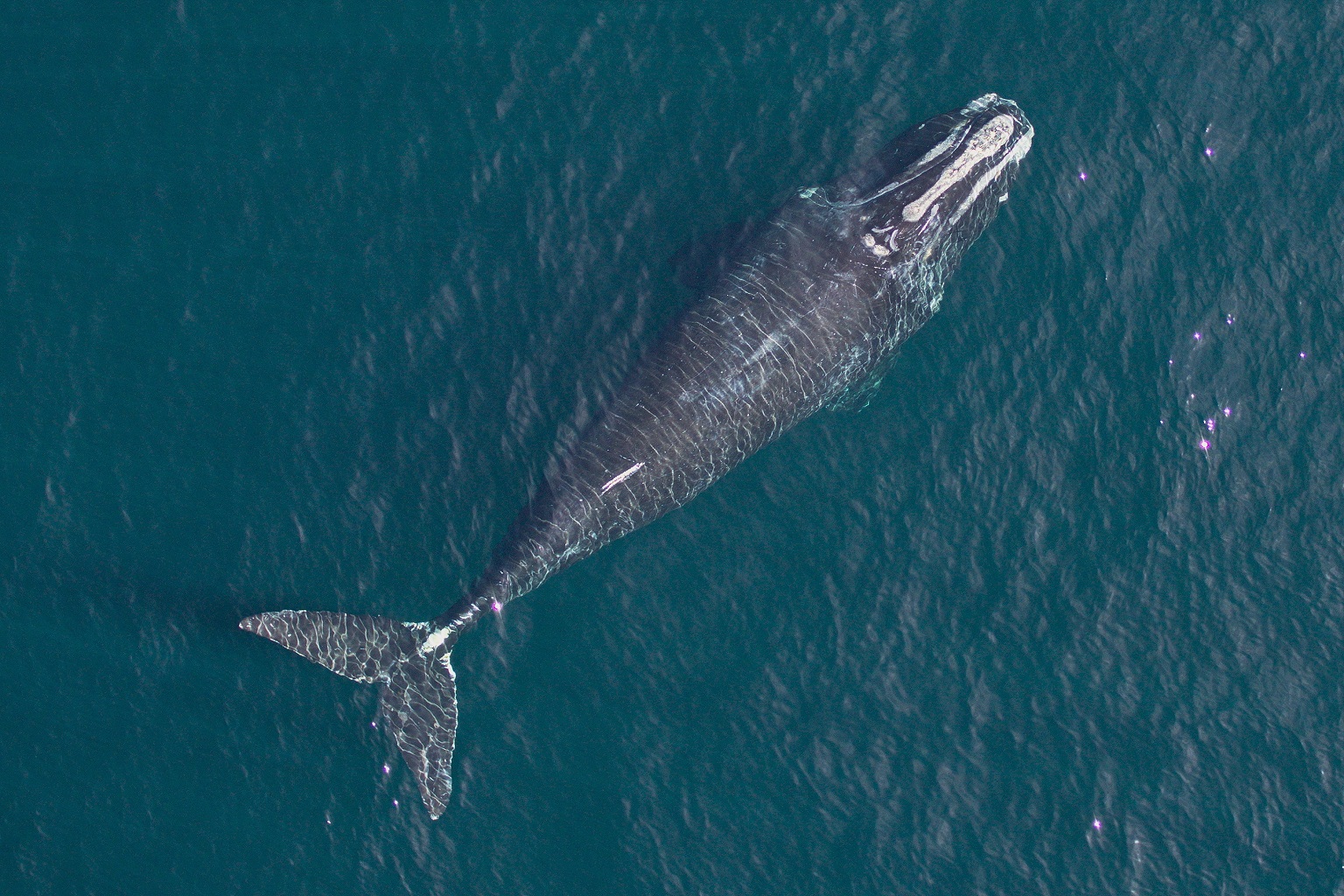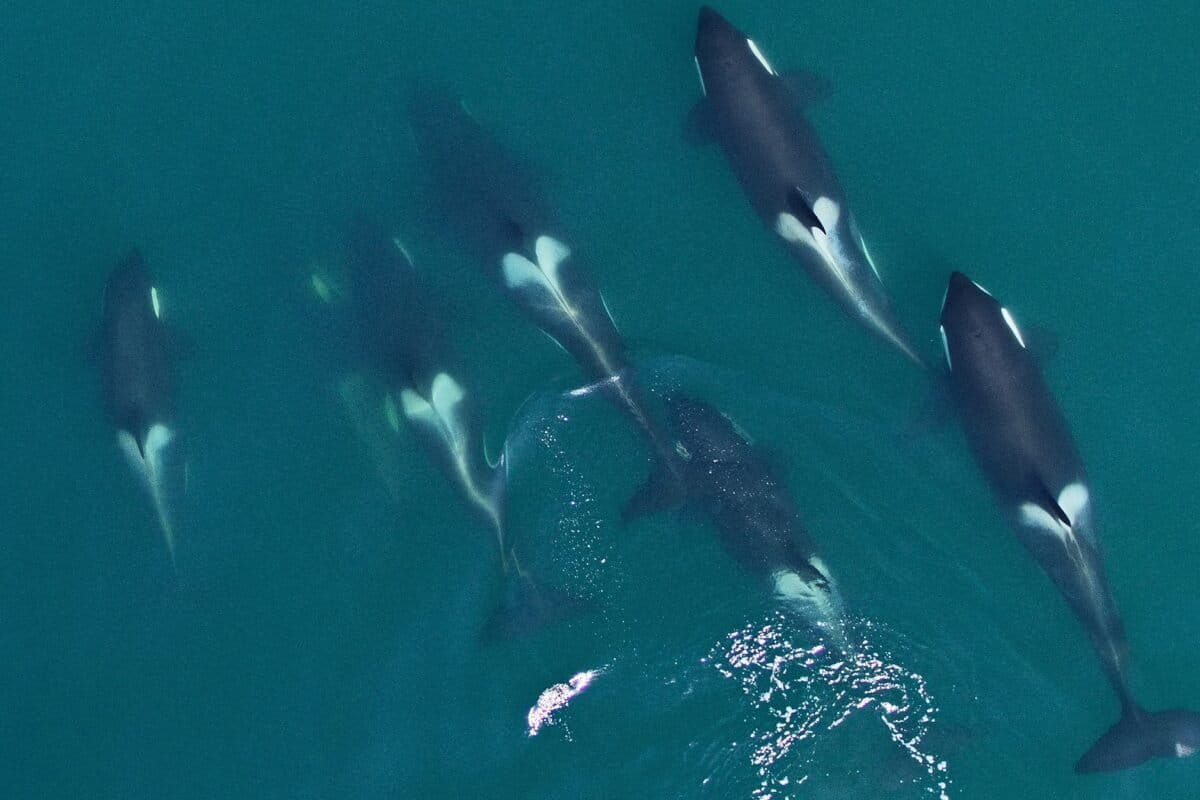Scientists have deployed drones and are using photogrammetry to determine how climate change is impacting the health of whale populations.By collecting the measurements of whales, scientists are able to track how environmental factors impact the growth and reproduction of right whales off the coast of New England and orcas in Alaska.Using the data, they found that a marine heat wave in 2013 reversed the revival of the population in Alaska that had plummeted after the Exxon Valdez oil spill in 1989; they also noticed that the whales didn’t grow as much as they should have.The method also enabled scientists to detect pregnant whales well in advance, allowing them to monitor if the pregnancy was successful or not.
See All Key Ideas
How are whale populations faring?
Traditionally, getting an answer to that question involved counting whales by taking their photos and identifying them from their natural markings. However, a caveat persisted.
Whales live a long time and reproduce very slowly. That means it often takes “a long time to learn about changes in the population as well as their health,” John Durban, senior scientist at the Andrew Cabot Center for Ocean Life at the New England Aquarium, told Mongabay in a video interview.
Now, Durban and his team are deploying drones and photogrammetry to complement their existing work and determine how whale health is being impacted by climate change. They measure the size and shape of whales from high-resolution aerial photos captured by drones. Using this data, they’ve been able to make a link between environmental factors and the animals’ health, giving them a clearer picture of how whale populations are faring and fluctuating.
“We have been looking at the individual health of whales as a kind of early-warning system before they die or start having reproductive issues,” Durban said. “That gives us a lot more power to assess the impact of things like climate change.”
For their research, the team focused on two species of whales in two different ocean basins: North Atlantic right whales (Eubalaena glacialis) that live off the coast of New England in the northeastern U.S., and orcas (Orcinus orca) in Alaska. For the former, the team ventures out into Cape Cod Bay in March and April every year when the right whales aggregate to feed on zooplankton. Similarly, in Alaska, they plan their field trips in May and June, when the orcas gather to feed on chinook salmon.
Once they find the whales, they start with traditional photo identification, before launching a drone. Over the course of each flight, which typically lasts anywhere between 10 and 30 minutes, they take photos of all the whales in the pod before moving on to find another group of whales.
 Once the team spots whales, they would do traditional photo identification before launching a drone to capture images for photogrammetry. Image by Véronique LaCapra, Woods Hole Oceanographic Institution; under NMFSResearch Permit #17355.
Once the team spots whales, they would do traditional photo identification before launching a drone to capture images for photogrammetry. Image by Véronique LaCapra, Woods Hole Oceanographic Institution; under NMFSResearch Permit #17355.
The data on body measurements have helped the team gain significant insights into the reasons behind changing whale populations.
In Alaska, for instance, they found that the orca population was just recovering from the Exxon Valdez oil spill of 1989 before plummeting as a result of a marine heat wave that started in 2013. They also learned that the orcas didn’t grow as much as they should have, as a result of the heat wave.
“We’ve got smaller whales up there and it has also had an effect on reproduction,” Durban said, “because smaller females don’t reproduce as successfully because they can’t store as much energy.”
With right whales, similarly, the team found that they’ve become shorter and skinnier over time. “It could be a function of having unpredictable food sources,” Durban said. “They’re smaller, which makes them less robust to perturbations because they can’t carry food reserves around.”
At an individual level, too, the data have given the scientists early warnings on which individual whales are doing well and which are not. The data have also helped them spot and keep an eye on whale pregnancies. “They have pregnancies that might last the better part of two years, but we can now detect it maybe a third of the way through the pregnancy,” Durban said. “That’s a very sensitive measure of how the population is doing that we wouldn’t normally see.”
However, challenges abound.
In addition to funding hurdles, the analysis and processing work is especially time-consuming, given it’s still done manually. Going through close to 40,000 images from each field expedition takes months. Durban said the team has been attempting to automate the process, but hasn’t been able to find or develop an artificial intelligence model that does what they want it to.
Additionally, in response to the changing climate, whales have started moving to new places. This has made their movements less predictable, making it harder for the scientists to find them.
Despite the hurdles, Durban said, the key is to keep the work going.
“These whales live longer than we do, and we need to understand the changes they are going through,” he said. “We’re in this for the long term.”
 By collecting the measurements of whales, scientists track how environmental factors impact their growth and reproduction. Image by Woods Hole Oceanographic Institution/NOAA/SeaLife Response, Rehabilitation and Research; under NMFS Research Permit #17355.
By collecting the measurements of whales, scientists track how environmental factors impact their growth and reproduction. Image by Woods Hole Oceanographic Institution/NOAA/SeaLife Response, Rehabilitation and Research; under NMFS Research Permit #17355.
Banner image: Photos of orcas captured using drones in Alaska. Image by John Durban / New England Aquarium, under NMFS Research Permit 22306, in collaboration with Kiirsten Flynn / North Gulf Oceanic Society.
Abhishyant Kidangoor is a staff writer at Mongabay. Find him on 𝕏 @AbhishyantPK.

